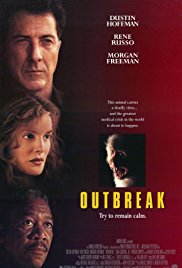THREATS TO HUMAN HEALTH PRESENTED BY VIRUSES
When it was discovered that bacteria could cause disease, there were many illnesses for which bacterial agents could not be found. These included serious diseases such as smallpox, polio, rabies, and influenza, as well as less serious maladies such as the common cold. These diseases and many more are caused by viruses.
Viruses are infectious agents which are between 20 and 100 times smaller than bacteria. They are too small to be seen through a normal microscope and can be visualized only through an electron microscope. Viruses consist of strands of genetic material (RNA or DNA) surrounded by a coating of protein (called a capsid). Viruses are not considered to be living organisms because they cannot reproduce outside of a living cell.
A virus binds to a cell when a part of the outer viral structure docks with a specific molecule on the cell surface. It then crosses the cell wall through a variety of methods (for example, injecting its genetic material through the cell wall or incorporating its capsid into the cell wall).
Viruses multiply by inserting their genetic information into a cell and harnessing the cell machinery to replicate the viral genetic material and make new capsids. The new viruses are then transmitted to other cells, either through the cell wall or when the cells burst and die. Viruses are parasites on a cellular level.
New strains of disease-causing viruses are a constant threat because viruses mutate easily. For example, each year a new influenza virus causes illness in millions of people. As a result, and because most drugs cannot disable a virus without harming healthy tissue, it is difficult to develop drug therapies to cure viral infections.
Viruses can be transmitted from one animal species to another. They affect each species differently and one species can harbor viruses deadly to another without any ill effect. For example, most Ebola viruses and the Hantavirus, do not cause disease in their host animals, but they are deadly to man. The Ebola-Reston virus, on the other hand, is deadly to monkeys but does not cause illness in humans.
Viral illnesses can be spread in a number of ways. Some, such as AIDS and Ebola, can only be spread through exchanges of blood or other bodily fluids. Others, such as influenza and the common cold, are airborne and enter through the respiratory tract. The Hantavirus is spread by breathing dried rodent feces which become airborne.
The Ebola virus is in the shape of a long rod, usually 800 to 1000 nanometers long. (A nanometer is one billionth of a meter.) The virus consists of a coiled strand of ribonucleic acid (RNA) contained in an envelope derived from the host cell membrane. The envelope is covered with spikes that are used by the virus to gain entry to new host cells. There are several strains of Ebola virus of varying degrees of mortality. The most fatal is Ebola/Zaire which kills 88% of those infected. The virus is called “Ebola” because it was first discovered near the Ebola river in Zaire.
Ebola hemorrhagic fever is characterized by a severe headache, weakness and muscle aches, followed by abdominal pain, diarrhea, inflammation of the throat, eyes and mucous membranes, bleeding from body openings and destruction of internal organs. The incubation period is usually 5 to 10 days. The course of the disease is usually 7 to 10 days if it proves fatal. Between 12% and 50% of the victims will survive, depending on the strain of the virus. There is no known cure. In Zaire in 1995, blood from patients who were recovering was transfused into severely ill patients in an attempt to transfer antibodies to neutralize the virus. This technique met with some success, but clinical trials have yet to be conducted. Conventional treatment consists of preventing shock and providing supportive care. Care must be taken to prevent the spread of the illness to health care workers. Convalescence takes five weeks or more.
The first identified outbreaks of Ebola occurred in 1976, one in Zaire and one in Sudan. There were about 550 cases and 430 deaths. Another outbreak occurred in the city of Kitwit, Zaire in 1995 affecting 315 people and killing 242. There have been isolated cases of Ebola in various places in Africa. Ebola spreads when a person becomes infected from an animal reservoir host and then spreads the disease to other humans. The host and natural transmission cycle for the Ebola virus remain unknown.
There are historical precedents for many of the events described in the film. For example, neither smallpox nor the common cold existed in the Americas before the Europeans came. The indigenous population had not developed any genetic resistance to these viruses. Europeans brought these diseases with them, unintentionally causing pandemics which destroyed more than 3/4 of the population of some Native American tribes. It is believed by historians that the reason that the Spanish explorer Cortez, with only three hundred men, could conquer the massive and powerful Aztec empire was the spread of smallpox.
In 1989, a deadly virus from Africa, the Lassa virus, was brought to the U.S. by a man who had traveled to Africa to attend the funerals of his parents, both of whom died from an illness thought to be caused by the Lassa virus. After the man flew home, he became ill, going to a suburban Chicago clinic complaining of fever and a sore throat. The doctors gave him antibiotics and sent him home where he died of Lassa fever. Fortunately, no one else became infected, partially because of improved sanitation precautions at the clinic imposed to restrict the spread of AIDS. There was also an outbreak of a strain of Ebola virus that was fatal to monkeys but fortunately not to humans at a primate quarantine facility in Reston, Virginia in 1989.
Hantaviruses infect vertebrates and are usually transmitted by dried rodent feces blown into the air as dust. Hantaviruses cause two different human diseases: hemorrhagic fever with renal syndrome, in which damage to the kidneys is common, and acute respiratory distress syndrome, in which damage to the lungs is common. Hantaviruses were first identified in the Korean War when thousands of United Nations soldiers became ill with fever, headache, and acute renal failure. Outbreaks in the American Southwest have been the most recent occurrences of Hantavirus infection.






